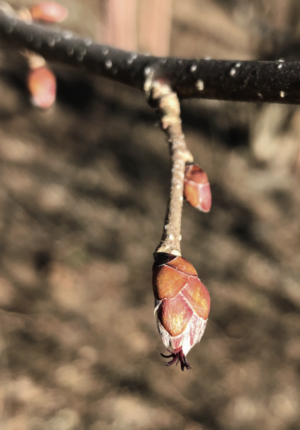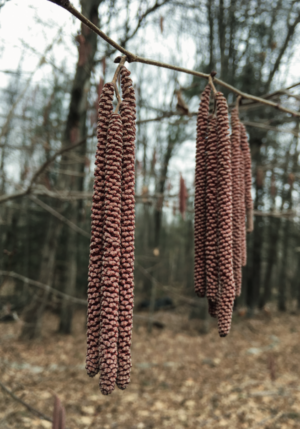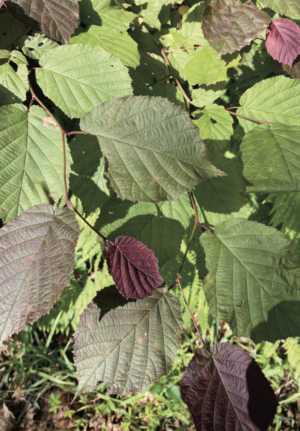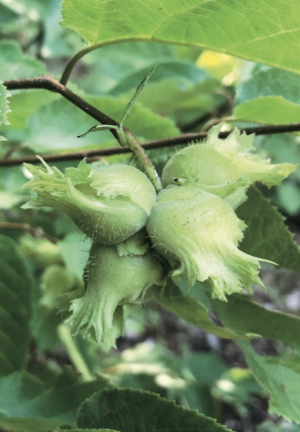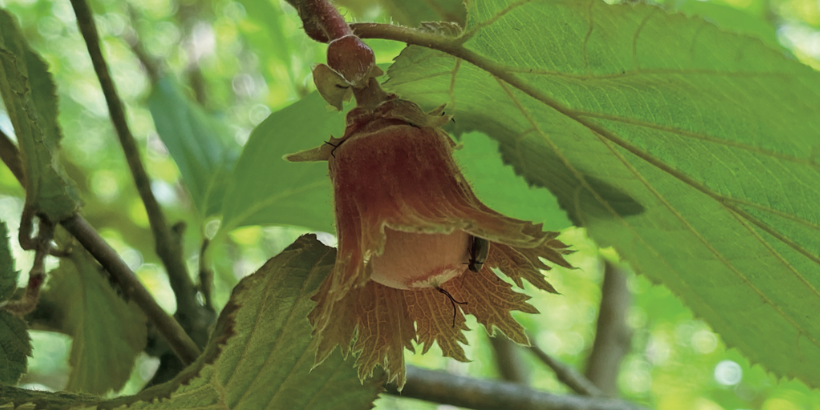
At the moment, hazelnuts are all the fashion. These small nuts, recognized for his or her one-of-a-kind taste, are each scrumptious AND hearty sufficient to be grown and harvested in virtually any climate circumstances. So what are you ready for? It’s time to begin harvesting hazelnuts!
The next is an excerpt from Chilly-Hardy Fruits and Nuts by Scott Serrano and Allyson Levy. It has been tailored for the net.
“Hazels belong to a really historical household, and a number of the fossil hazel leaves are hardly to be distinguished from these species which live at present.” — Robert T. Morris, 19211
The Historical past of Hazelnuts
Corylus americana, C. avellana American Hazelnut, European Hazelnut, Filbert
The Latin identify Corylus is derived from the Greek phrase korys, which implies “helmet” or “hood,” in reference to the fleshy husk that utterly covers every nut.2 There’s a lengthy historical past of individuals utilizing hazelnuts as a nutritious meals crop along with the nut being an essential forage for wildlife.
The identify cobnuts refers to bigger cultivated forms of hazels, and filberts is commonly used because the identify for European hazelnuts grown within the Pacific Northwest. However in fact, the phrase filbert was a corruption of full beard, which particularly refers to a hazel whose husk prolonged previous the nut.3
The best way to Develop and Harvest Hazelnuts
European hazelnut (C. avellana) is indigenous to Europe and the UK, and is the primary supply for almost all of improved cultivars. Though there are tree types of the hazelnut, the frequent kind is a dense, multi-stemmed shrub that sends up new shoots yearly.
Due to its typical type of development, there’s a lengthy custom of hazelnuts being planted as a multifunctional hedgerow that’s not solely used as a meals supply but additionally is repeatedly pruned to create a sustainable provide of wooden for fires and basket making, in addition to offering a protecting windbreak round farm fields.
The dominant species of hazelnut native to america is the American hazelnut (C. americana).
Progress Issue Score: 1
Each American and European hazelnuts are straightforward to develop, however the latter will be prone to EFB, or jap filbert blight.
Style Profile and Makes use of
The nuts are lined by an involucre (protecting husk), which is fleshy in addition to ornamental. Because the nuts ripen by the summer time, this involucre expands till the nut is ripe and falls from the husk, which generally stays on the tree department. The nut dimension varies from 1⁄2 inch (1.3 cm) in most wild species to 1 inch (2.5 cm) in bred cultivars. The thickness of the shells varies with every species and cultivar, however they’re usually straightforward to open with a nut cracker.
Hazelnuts are a nutritious nut, with a light sweet-buttery taste that we expect tastes scrumptious eaten out of hand, however roasting the nuts brings out their greatest culinary qualities and they’re typically used this fashion as an addition to each savory and candy recipes. Probably the most in style merchandise made out of this nut is Nutella, the well-known chocolate hazelnut unfold.
Plant Description: Hazelnuts
A reasonably fast-growing, deciduous, multi-suckering shrub or tree that may attain 8 toes (2.4 m) (American) to twenty toes (6.1 m) (European) in top, relying on the species and cultivar. Each species have vibrant inexperienced foliage that has a beautiful pleated look with toothed edges. The leaves are alternately organized on the stem.
The two- to 4-inch (5.1–10.2 cm) European leaves are extra ovate, whereas the American are 21⁄2 to six inches (6.4–15.2 cm) lengthy, with a narrower form and pointed tip. Because the crops become older, the foundation sections ship out new suckers in a circle surrounding the bush, generally showing just a little untidy and messy.
Hazelnut Flowers
Hazelnuts have each female and male flowers on the identical plant, with very enticing catkins (male flowers) that bloom to a size of two to 4 inches (5.1–10.2 cm) within the American species and a couple of to five inches (5.1–12.7 cm) for the European varieties.
Each the American and European hazelnuts produce yellow catkins, whereas purple-leaved cultivars produce gentle pink catkins.
The catkins for each varieties develop within the late summer time and are displayed all winter lengthy on the deciduous branches, making a extremely decorative impact, with the lengthy flowers opening up into good-looking tassels in early spring.
Shortly after this the tiny scarlet-red feminine flowers for each species open close to the tip of the department stems and develop to about 1⁄8 inch (3 mm).
Pollination Necessities for Hazelnuts
The flowers open in early spring when few bugs are alive, so hazelnuts rely upon wind to be pollinated. Bushes aren’t self-fertile and should have one other hazel bush to cross-pollinate them to provide nuts.
They profit from being planted in teams, and American and European species will cross-pollinate one another, which might present a possibility to strive rising various kinds of hazels. There are a number of new cultivars that open at barely totally different occasions and should have particular pollination necessities.
Website and Soil Circumstances
Each plant species are extensively adaptable to totally different rising circumstances however are greatest grown in barely acidic soil partially shade, or in constantly moist soil in full solar. Hazel bushes do much less effectively in sandy soils, however including leaf humus, compost, or different natural supplies will assist the plant’s roots adapt.
American hazelnut is present in our area of upstate New York in forest clearings and alongside the alluvial clay soil banks of streams, so long as they don’t seem to be waterlogged, whereas European varieties choose organically wealthy, well-drained soil.
Hardiness of Hazelnuts
American and European crops are hardy to about zone 4, or −30°F (−34°C), however totally different cultivars have varied ranges of chilly tolerance.
Fertilization and Progress
Underlining the plant’s toughness, hazel bushes produce edible nuts within the wild in dangerous soil with little fertility. However crops shall be extra productive with common additions of compost utilized as a mulch.
Hazelnut Cultivars
For the reason that early 1900s, efforts to develop appropriate hazelnut cultivars for jap North America have been ongoing, with the purpose to mix the illness resistance and winter hardiness from cold-climate-adapted species with the bigger kernels and the thin- ner shells of European hazels.4
The 2 major sources for hazelnut breeding have been American and European hazelnuts, which have been mixed and crossed with different hazel species to provide shut to 1 hundred cultivars.5
Really useful Cultivars
Under we listing a couple of of essentially the most advisable cultivars that we have now discovered produce dependable crops. Within the final fifty years, the large push in breeding has been to extend nut yields and construct immunity from EFB in an effort to create disease-resistant nuts. So within the close to future, there needs to be many new blight-resistant hazelnuts available on the market.6
It needs to be famous that due to the hazard of EFB, mail-order nurseries is not going to ship hazelnuts to sure components of america.
American Hazelnut: ‘Winkler’: An American cultivar launched in 1918 that grows to six toes (1.8 m) and isn’t prone to EFB, with nuts which can be barely bigger than straight species.
European Hazelnut: ‘Rote Zeller’: A decorative purple-leafed cultivar from Germany that’s hardy to zone 5 (−20°F/−29°C). The crops start every season with scarlet-burgundy leaves that flip inexperienced by the center of summer time. They yield medium-sized nuts lined with enticing scarlet husks.
Hybrids:
- ‘McDonald’: A big bush that has good EFB resistance and was launched by the plant breeder Peter McDonald. It has good-quality nuts and is hardy to zone 4 (−30°F/−34°C).
- ‘Slate’: A blight-resistant (probably immune), productive cultivar with very massive and flavorful nuts. Launched by George Slate of the New York Agricultural Experiment Station in Geneva, New York, the crops attain 12 to 18 toes (3.7–5.5 m) in top.
Associated Species to Hazelnuts
The beaked or Western hazelnut (C. cornuta) is a bush native to massive parts of North America from Maine to British Columbia. A drought-resistant, 4- to 9-foot (1.2–3 m) tall bush, although it could develop bigger.
Hazelnut Propagation
Nuts will be gathered in late summer time (earlier than squirrels get them) and planted in a pot over the winter in a protected website that rodents can not discover. A standard strategy to get crops which can be true to the unique cultivars is by digging up and replanting a number of the new shoot suckers that kind across the base of the bush, which is greatest achieved in early spring.
One other strategy to propagate hazels is by layering branches: Bury low-lying branches within the soil to permit them to kind roots. Roots could take a couple of season to develop, and you may depart buried limbs in place for years earlier than digging them up so that you simply get crops with substantial root programs.
Particular Be aware on Hazelnuts
Grafting is one other methodology of manufacturing cultivars. The chief downside with a grafted hazelnut is its propensity for sucker- ing, and if these suckers aren’t pruned away from the tree, the ensuing shoots is not going to be true to the particular cultivar. Because of this we advocate planting solely bushes which have their very own roots and aren’t grafted.
Particular Pruning Concerns
As hazelnut branches age they’ll ultimately cease yielding nuts. Because of this older, much less productive branches needs to be pruned off the bush in favor of youthful ones that may substitute them.
Since nut productiveness on branches lasts from 5 to 10 years, search for branches which have stopped producing catkins to find out which needs to be pruned off. These are coppiced (in the reduction of to the bottom periodically to stimulate new development). Many specimens of hazel have lived for a whole bunch of years in Europe.7
Pests & Issues
The chief limiting issue to rising hazelnuts in america has been jap filbert blight (EFB). This illness is a naturally occurring fungus, native to the jap portion of america and some websites within the West. Many college and USDA breeding packages have been devoted to producing disease-resistant cultivars.8
EFB is the key downside with European hazelnuts. The blight (Anisogramma anomala) has developed alongside American hazelnuts and doesn’t have an effect on this species.
European hazelnuts had been launched into america as a industrial crop within the early twentieth century, and shortly thereafter complete East Coast orchards had been destroyed. EFB was present in varied states east of the Rocky Mountains, and within the Seventies it was found in orchards in Oregon.
Stopping Pest Harm
EFB seems as oval cankers that develop in rows on branches; by summer time, girdled branches turn into apparent as a result of lifeless leaves stay connected. Over a brief span of time, extra leafless, lifeless, and dying branches turn into seen within the cover because the illness spreads.
Diligently pruning out contaminated branches and making use of a fungicide will assist to scale back the illness in an affected space. Eliminate diseased branches by burning them or inserting them within the rubbish. If EFB is a serious downside in your area, choosing disease-resistant cultivars shall be essential to lowering the chance of the blight.
In our gardens the ten hazelnut bushes of various species and disease-resistance ranges have been rising for over eighteen years and we have now not had any issues with the blight. Nonetheless, we do reside in part of america the place EFB is current, and we’re at all times looking out for indicators of the illness.
Notes
1. Robert T. Morris, Nut Rising (New York: Macmillan, 1921), 203.
2. Susanna Lyle, Fruit & Nuts (Portland: Timber Press), 2006.
3. Morris, Nut Rising, 210.
4. Thomas Molnar, “Corylus” Wild Crop Family, edited by Chittaranjan Kole (New Brunswick, NJ: Rutgers College, 2011), 15–48, www.researchgate.internet/publication/226038600_Corylus.
5. Molnar, “Corylus,” 15–48.
6. P. Rutter, S. Wiegrefe, and B. Rutter-Daywarer, Rising Hybrid Hazelnuts (White River Junction, VT: Chelsea Inexperienced, 2015).
7. Ralph Harmer, “Restoration of Uncared for Hazel Coppice,” Edinburgh Forestry Fee (2004), https://www.forestresearch.gov.uk/paperwork/6757/FCIN056.pdf.
8. JasonFischbachandLoisBraun,“AProduction and Financial Mannequin for Hedgerow Hazelnut Manufacturing within the Midwestern United States” (2017), https://www .midwesthazelnuts.org/uploads/3/8/3/5 /38359971/production_and_economic _model_for_hedgerow_hazelnut_production _v4.pdf; C. F. Lunde, S. A. Mehlenbacher, and D. C. Smith, “Survey of Hazelnut Culti- vars for Response to Jap Filbert Blight Inoculation,” HortScience 35, no. 4 (July 2000), 729–31; J. Julian, C. Seavert, and J. L. Olsen, “An Financial Analysis of the Impression of Jap Filbert Blight Resis- tant Hazelnut Cultivars in Oregon, USA” Acta Horticulturae 845 (2009), 725–32.
Really useful Reads
